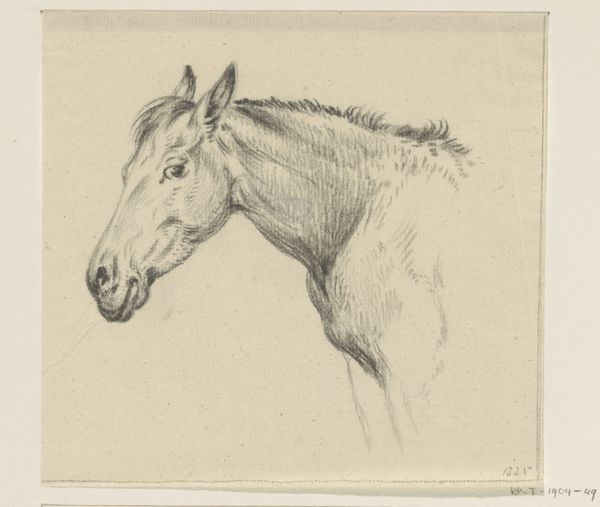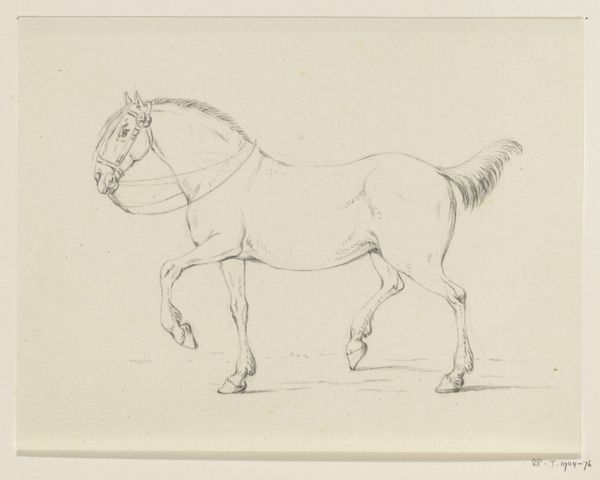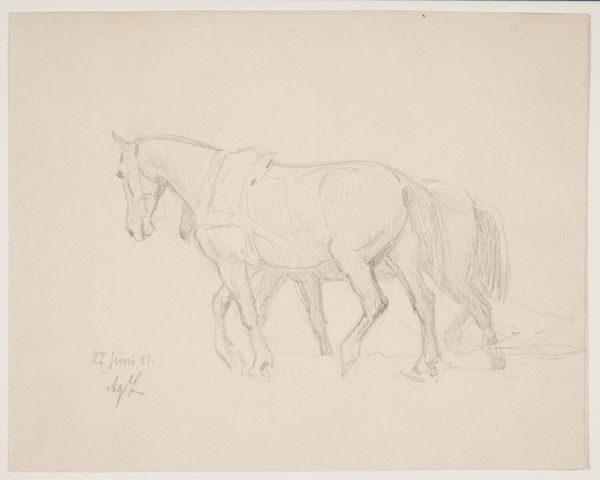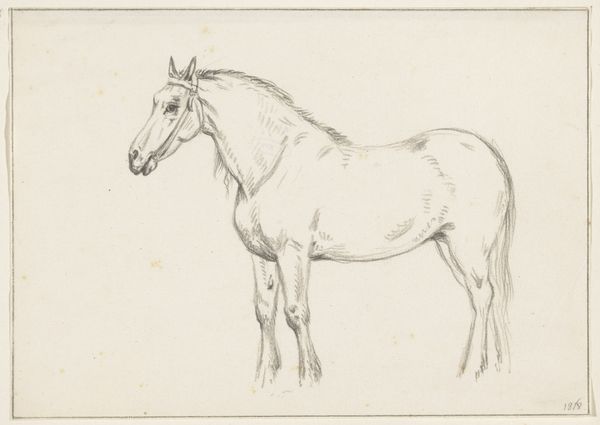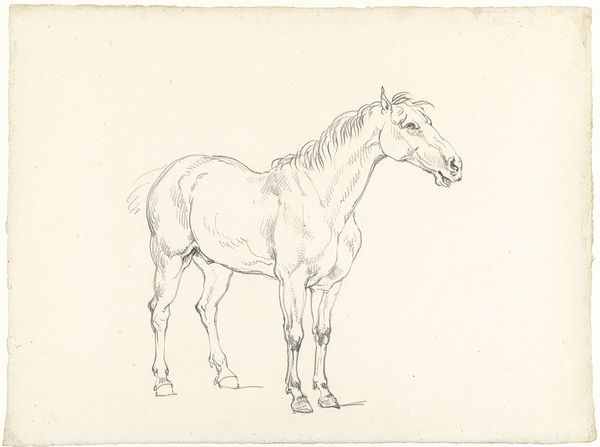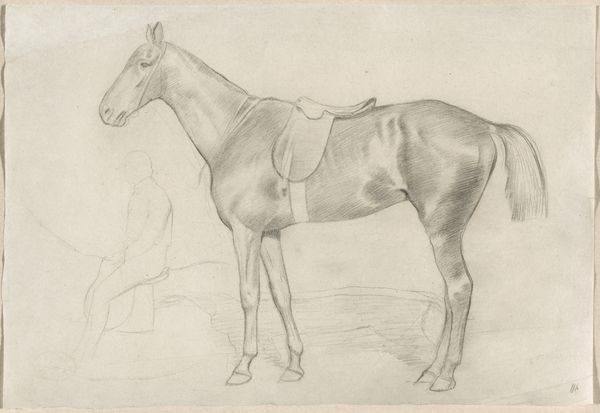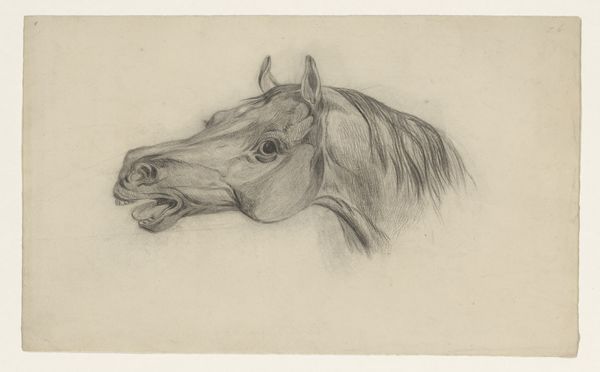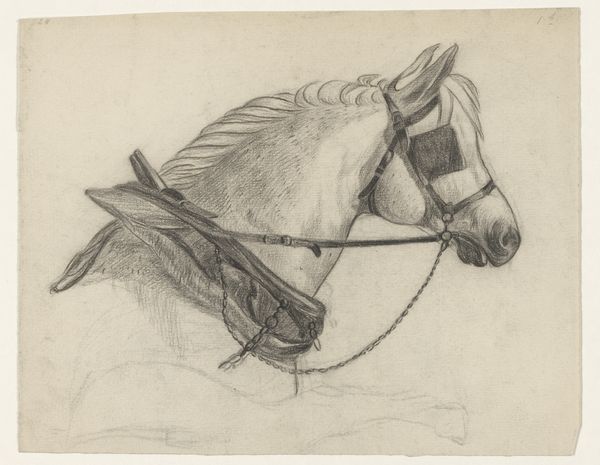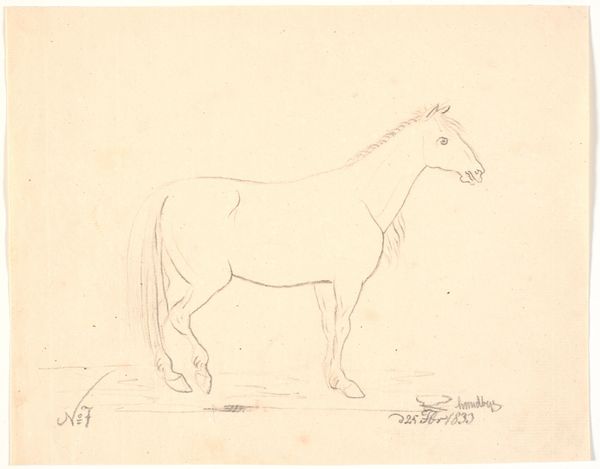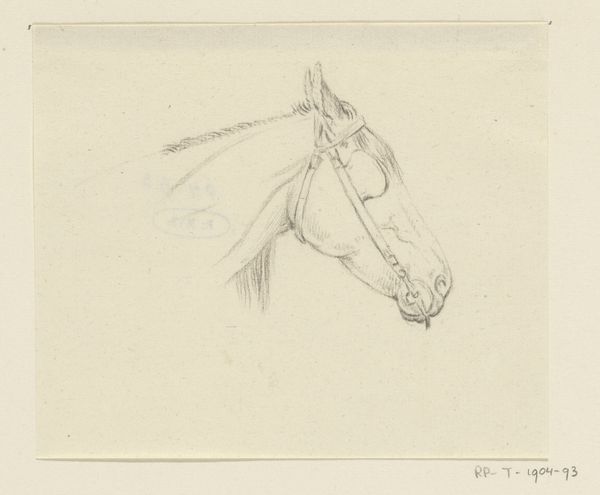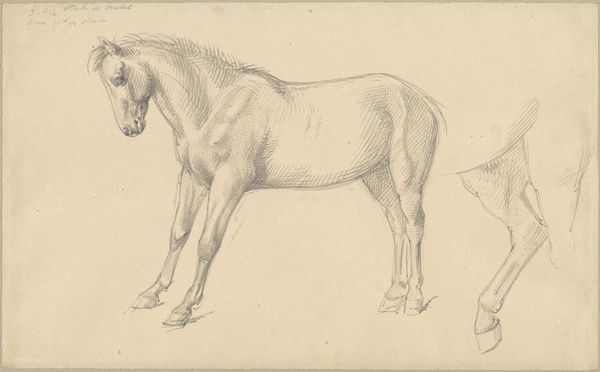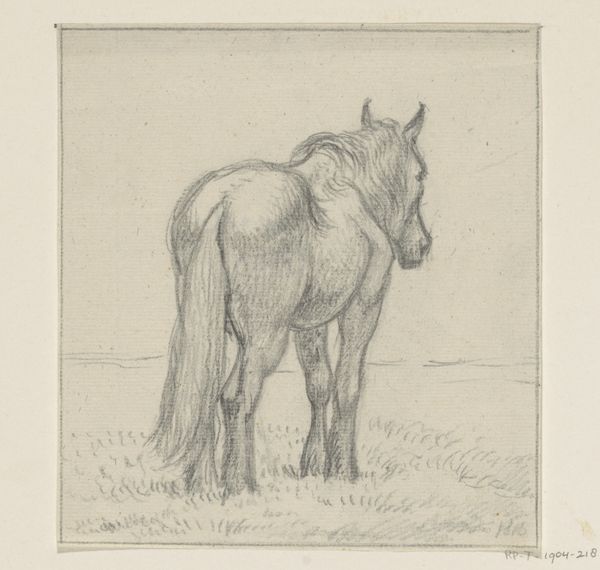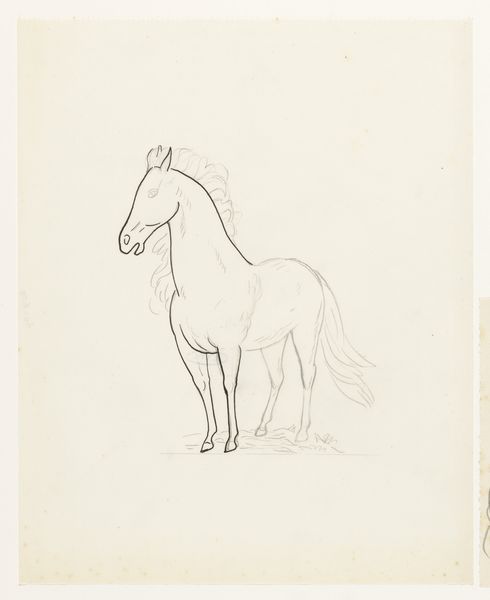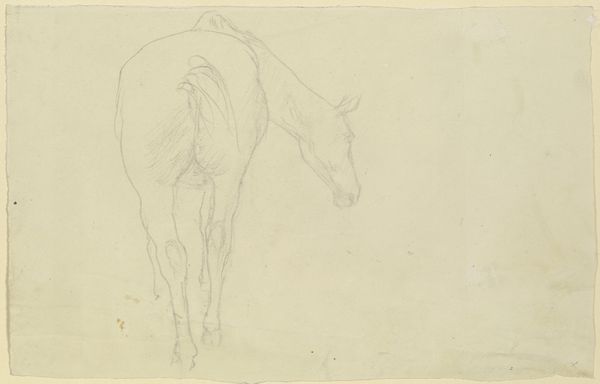
drawing, pencil, graphite
#
drawing
#
landscape
#
figuration
#
form
#
pencil drawing
#
pencil
#
horse
#
line
#
graphite
#
realism
Dimensions: height 312 mm, width 421 mm
Copyright: Rijks Museum: Open Domain
Editor: This drawing, "Staand paard, naar links," or "Standing horse, facing left," was created by Johannes Abraham Mondt around 1915. It's a pencil drawing, and the lines give the horse a gentle, almost melancholic mood. As a historian, what aspects of this piece particularly capture your attention? Curator: Given the historical context of 1915, right in the middle of the First World War, the drawing prompts reflections on the role of horses during that era. Beyond rural settings, they were instrumental in the war effort, often enduring horrific conditions. Do you think Mondt's work, whether consciously or not, participates in shaping the perception – perhaps even the idealization – of the animal? Editor: That's a striking point! I hadn't considered the war's impact. Now, the horse's subdued posture seems less gentle and more like weariness. How would this drawing have been viewed by the public at the time, knowing that these animals were being used in battle? Curator: It's difficult to say definitively without direct archival evidence of public reception, but we can infer possibilities. Perhaps it offered a moment of quiet reflection amidst the widespread turmoil. Or maybe it reinforced a sense of national identity, connecting to agrarian traditions being simultaneously disrupted by modernization and wartime demands. Considering it's a drawing, it also prompts reflection on the availability and access to fine arts during that time. Editor: So, beyond just being a picture of a horse, it's tied into larger conversations about war, national identity, and the arts at the time. I'm also intrigued by the almost photorealistic detail juxtaposed with the swift, impressionistic strokes of the pencil. It feels incomplete and hyper-realistic at the same time. Curator: Yes, these contrasting styles create visual tension. Thinking about the institutions of art – art schools and patronage – how might the work fit or challenge academic artistic expectations of that time? Was Mondt perhaps consciously negotiating those established norms through his technique? Editor: That makes me see the drawing in a whole new light, moving beyond the initial impression of a simple horse sketch. Curator: Indeed! By analyzing artistic depictions within their socio-political frameworks, we can reveal the complex interactions between art, history, and society.
Comments
No comments
Be the first to comment and join the conversation on the ultimate creative platform.
